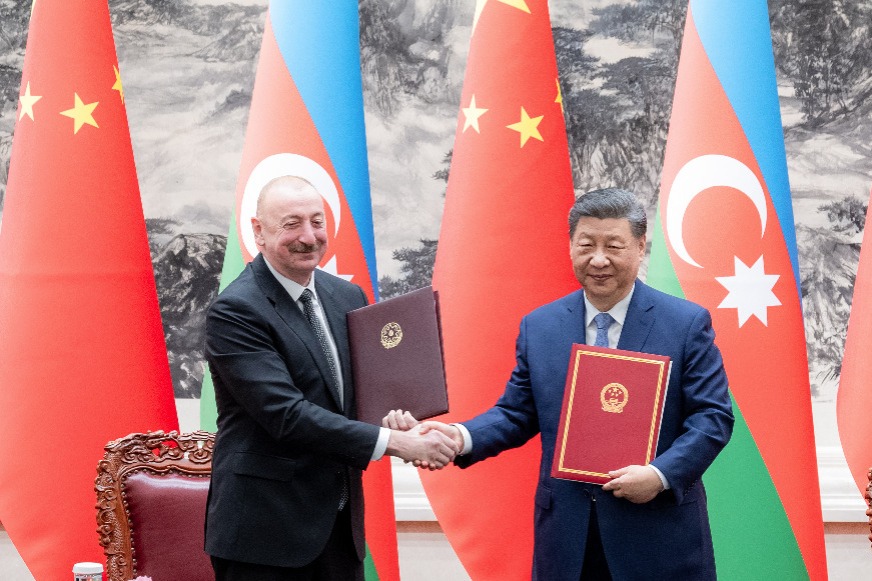China Integrated City Index 2019 ranks 297 Chinese cities


Ming Xiaodong, official of the National Development and Reform Commission, and former minister-counsellor of the Chinese Embassy in Japan
The China Integrated City Index 2019 jointly compiled by the National Development and Reform Commission and Cloud River Urban Research Institute was released. It is the fourth one since its launch in 2016. In view of historical data, the Index accurately documents China's urban development, and reflects the improvement in the quality of China's urban development, the spatial forms, as well as the urban-rural structure.
From the perspective of the quality of development, the Index scores the ability and scale of the sustainable development of cities on indexes of the environment, society, and economy, encompassing 878 sets of data. In view With an eye to the new round of the scientific and technological revolution and the industrial revolution, the Index has selected a series of indictors related to innovation and entrepreneurship to reflect the new vitality of urban development. Since the Index was unveiled for the first time five years ago, the quality of China's urban development and the urbanization rate have been significantly improved. A rural migrant population of about 100 million has settled down in cities, and more than 13 million new jobs were created in cities each year. The urban rail transit has developed rapidly, with operating mileage exceeding 5,500 kilometers. Cities have enhanced their governance ability, as the sewage treatment rate reached 95.6%, and the harmless treatment rate of domestic waste remarkably increased. Cities have taken a new look while scoring substantial progress in building a green, smart and cultural city.
From the perspective of spatial forms, the Index looks at 297 cities at prefecture-level and above across the country, which makes the Index broad-based and representative and reflects the characteristics of China's spatial and economic layout in cities. Many of these cities are national central cities or regional central cities, featuring city clusters as the main body of China's urban spatial layout. The Index includes a series of sub-indexes regarding core radiation to represent a city's influence in a certain field. Over the past five years, the effect of China's urban population clustering and economy have taken effect, as 19 cities accommodate more than 75% of urban population and contribute over 80% of GDP. The formation of metropolitan areas speeds up. With central cities playing a bigger role, infrastructure, public services and industrial development are further integrated. The number of cities increased from 657 to 684.
From the perspective of the urban-rural structure, although the Index takes cities as the main object to give a comprehensive evaluation of urban development, agriculture-related sub-indicators in the categories of the environment, society and economy have been designed in view of the "cities manage villages" situation in China's administrative regions. In particular, combining the reality of "uneven urban-rural development is the prominent problem in China's economic and social development," the major indicator of economy encompasses a series of sub-indicators concerning urban-rural integration, and reflects interaction between urban development and rural vitalization. Over the past five years, China's integration between urban and rural development has made headway. With better urban-rural development integration mechanism and policies, we have aligned urban basic public service system with its rural counterpart at an accelerated speed. Rural infrastructure such as water, electricity, roads and the network has been enhanced across the board, and urban-rural income ratio dropped from 2.75 in 2014 to 2.64 in 2019.
The Index represents some new changes in China's urban development. Compared with the previous year, cities have further polarized as seen in the ranking. Changchun and Harbin in northeastern China no longer made the top 30, largely due to a steep decline on the social indicator. Nanchang in central China and Guiyang in western China made their way into the top 30. In terms of the environment, the ranking changes greatly. Shanghai and Guangzhou moved up to second and third spots after Shenzhen, indicating that the environment of mega cities can be significantly improved as long as their management level are enhanced. Wenzhou, Longyan, Heihe, Tianjin, Nanping, Putian, Quanzhou, Hulun Buir, Lincang dropped out the top 30. Measured by the social indicator, cities' ranking correlates with the economic ranking, indicating economic growth is the backbone of social development. Shijiazhuang and Taiyuan fell out of the top 30. Measured by the economic indicator, the ranking changes slightly, but the top league is still dominated by those traditionally powerful cities, with Changzhou and Yantai dropping out the top 30. Changes in indicators show that China's economy is overall balanced, but its economic focus remained in the south. The ecological environment has improved, but several cities that are long famed for their good environment slipped in the ranking. Social development has made progress, but still relies heavily on economy.
To sum up, the Index is based on scientific selection and a complete system, covering major dimensions of urban development. It represents the future development of cities, and can serve as a good reference book for the comprehensive assessment of cities.
- Xi calls for advancing global climate governance
- China, Azerbaijan elevate partnership
- US political manipulation of novel coronavirus opposed
- International Lunar Research Station attracts more partners: CNSA
- Shanghai International Coffee Culture Festival 2025 is set to kick off
- Digital Earth symposium opens in Chongqing with focus on SDGs





































